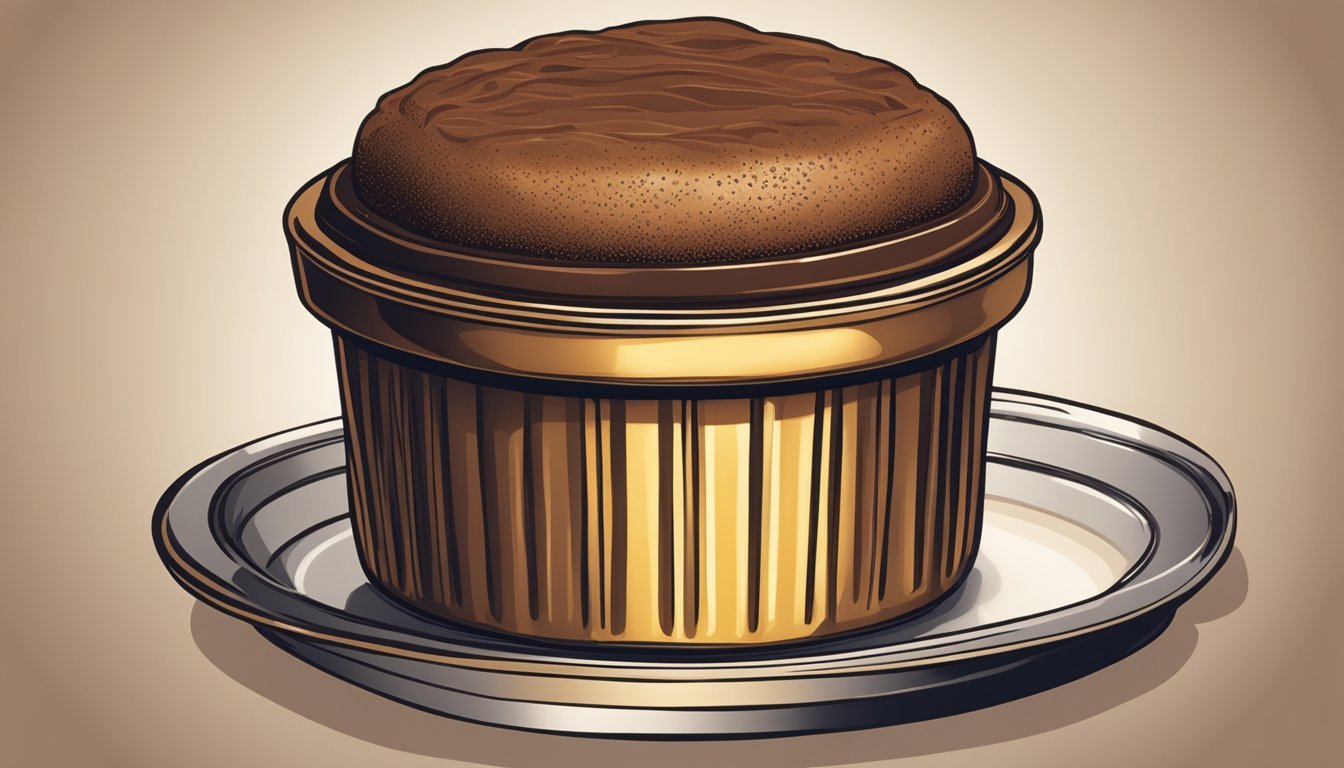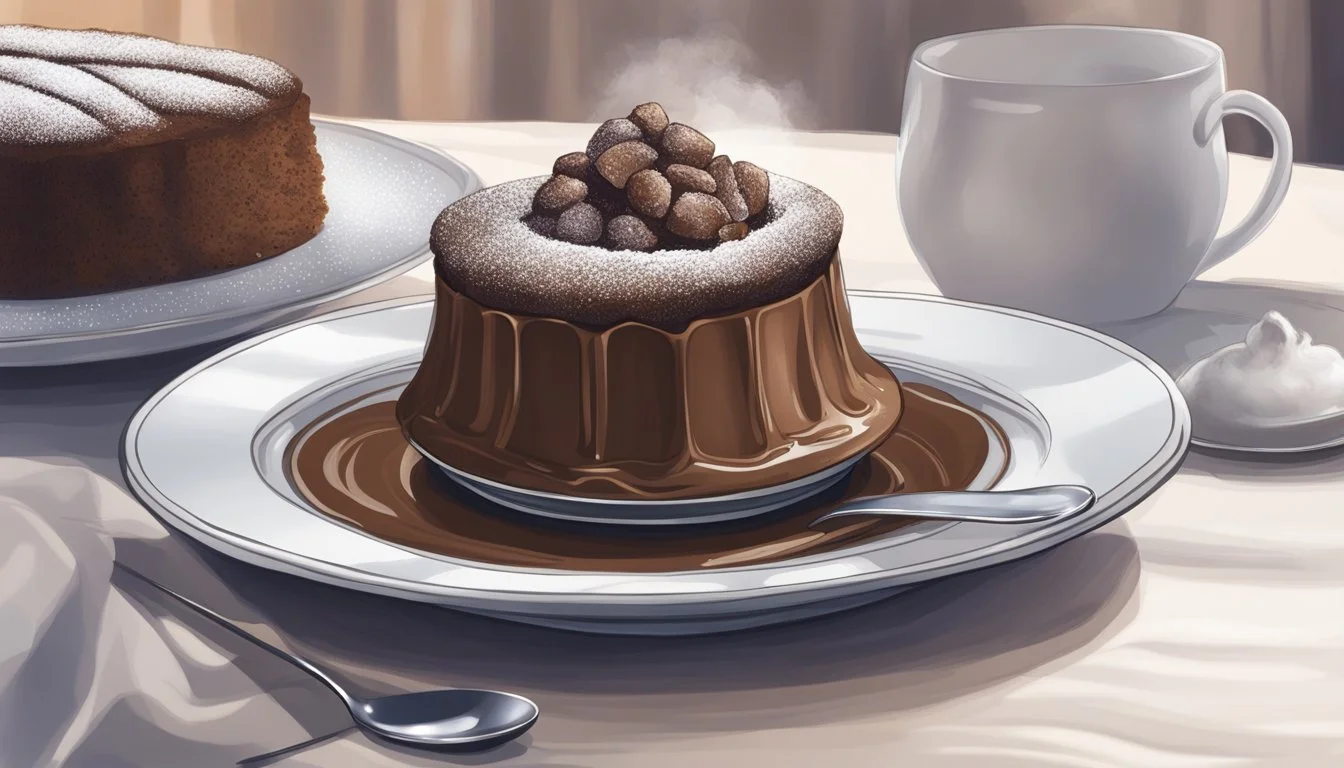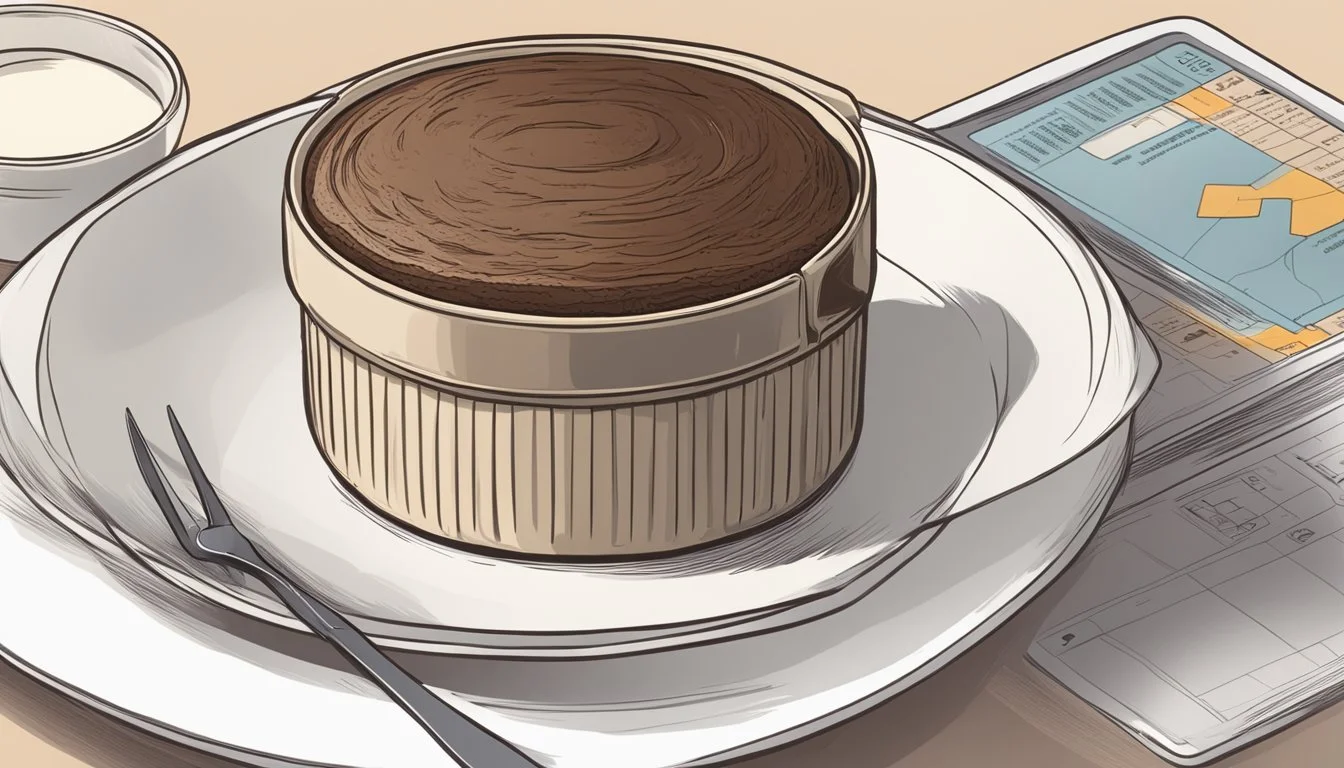Best Way to Reheat a Chocolate Soufflé
Keeping Its Perfect Rise Intact
Reheating a chocolate (What wine goes well with chocolate?) soufflé presents a unique challenge; the aim is to preserve its delicate rise and sumptuous texture which set it apart when first out of the oven. Chocolate soufflé, known for its light, airy consistency and rich flavor, can still be enjoyed after its initial bake with the right reheating technique. It is essential to approach the process with care to ensure the soufflé maintains its characteristic loftiness and does not become dense or dry.
The key to successfully reheating a chocolate soufflé lies in gently warming it just enough to bring back its warmth and softness without compromising the structure. While several methods can potentially do the job, some may offer a more consistent result than others. It is advisable to avoid the microwave, which can unevenly heat and potentially deflate the soufflé. Instead, using an oven or an air fryer provides a more controlled environment for the soufflé to regain its temperature and texture.
Understanding the intricate balance between heat and timing is crucial when reviving chocolate soufflés. A low and gentle heat helps to warm the soufflé through without causing it to lose its rise. The aim is to reheat without altering the essential qualities that make a chocolate soufflé delightful. Accurate temperature control and careful observation can lead to a successfully reheated dessert that echoes the pleasures of its first serving.
Understanding Soufflés
When approaching the task of reheating a chocolate soufflé, it's crucial to understand both its composition and the scientific principles that enable its characteristic rise. This knowledge is key for ensuring that the reheated soufflé retains the airy texture that is so desirable.
Composition and Ingredients
A soufflé is a delicate baked dish with a starchy base often thickened with a roux or in the case of a chocolate soufflé, a chocolate mousse. The primary ingredients include:
Egg whites: Whipped to stiff peaks, they are the structural backbone that provides the lift.
Sugar: Typically granulated sugar, adds sweetness and assists in stabilizing the egg whites.
Egg yolks: Enrich the base, contributing to the flavor and texture.
Chocolate: Often melted, it forms the flavor base of a chocolate soufflé.
Vanilla extract: Adds depth to the chocolate flavor.
Unsalted butter: For coating the ramekins and adding richness.
Salt: Enhances flavors and strengthens the structure of the meringue.
Cream of tartar: Stabilizes the whipped egg whites, helping them maintain their volume.
The Science Behind the Rise
The rise of a soufflé is a precise culinary reaction that hinges on creating and retaining trapped air within the mixture. Egg whites are the star here. When they are whipped, air gets incorporated, forming a network of bubbles stabilized by the protein within the egg whites. This process, alongside a raising agent like cream of tartar, is what provides the needed structure. As the soufflé bakes, the air expands from the heat, causing the mixture to rise and become light and airy. However, improper reheating can cause the entrapped air to escape, leading to a soufflé that loses volume and becomes dense.
Preparing for Reheating
Before attempting to reheat a chocolate soufflé, certain preparatory steps are crucial to ensure that the dessert retains its characteristic rise and delightful texture. Proper initial baking and cooling techniques, followed by appropriate storage methods, lay the groundwork for successfully restoring the soufflé's warmth and appeal.
Initial Baking and Cooling
To reheat a chocolate soufflé effectively, it's essential that the initial baking process is done correctly. Ramekins should be adequately coated to prevent sticking, which could affect the soufflé's structure when reheating. After baking the soufflé in the oven, it should be allowed to cool to room temperature. Rushing the cooling process or exposing the soufflé to abrupt temperature changes can lead to collapse, making it less likely to re-rise during reheating.
Key steps include:
Coat ramekins lightly but thoroughly with butter and sugar or cocoa powder to allow for easy release after baking.
Once baked, remove the soufflé from the oven and place it on a wire rack. Allow the soufflé to cool at room temperature before storing.
Proper Storage Techniques
A well-stored soufflé is more likely to retain its structure and rise when reheated. The soufflé should be covered and stored in the refrigerator if not consumed immediately. When placing them in the fridge, ensure they are not in contact with strong-smelling foods, as they can absorb odors which may alter the flavor profile of the dessert.
Storage steps:
Wrap the cooled soufflé gently with cling film to protect it from absorbing fridge smells.
Refrigerate at a consistent temperature. Avoid freezing as this can alter the texture and moisture content, impacting the ability to achieve a proper rise when reheated.
Reheating Methods
Reheating a chocolate soufflé effectively requires precision to maintain its delicate rise and texture. Below are targeted techniques for restoring the warmth and allure of this elegant dessert.
Conventional Oven Reheating
The conventional oven is the most reliable method to reheat a chocolate soufflé. One should preheat the oven to approximately 350°F (175°C) aiming for gentle reheating. Place the soufflé on a baking sheet to ensure it heats evenly. To prevent the top from becoming too crisp, one may opt to cover the soufflé with foil. This technique preserves the soufflé's light texture and prevents it from drying out.
Microwave Reheating
While not ideal, if time is limited, reheating a soufflé in the microwave can be an option. To avoid overheating, it is crucial to microwave in short intervals of 15-20 seconds at medium power, checking the texture periodically. This method requires attention, as there's a fine balance between achieving a soft center and losing the soufflé's rise.
Alternative Warming Techniques
For those seeking to heat individual components, such as a chocolate coating or ganache, a double boiler presents a gentle warming technique. Place ganache in a heat-proof bowl over simmering water, ensuring the bottom doesn't touch the water, and stir until soft. This process preserves the silky consistency of chocolate coatings. Alternative methods may offer quick options, but the conventional oven process remains the preferred choice for a comprehensive reheating that respects the soufflé's delicate structure.
Ensuring Perfection Post-Reheating
Reheating a chocolate soufflé requires precise methods to maintain its delicate texture and flavor. The goal is to keep the soufflé soft and airy without it deflating or becoming dry.
Troubleshooting Common Issues
Deflation: To prevent the soufflé from losing its rise during reheating, use a preheated oven at a moderate temperature, usually 350 degrees Fahrenheit, for a short time. Monitor the soufflé closely to avoid overbaking, which could lead to deflation.
Texture: If the soufflé turns out dry, cover it with foil during reheating to help retain moisture. A soufflé should be reheated until just warm to keep the inner texture soft and rich.
Exterior: Maintain a glossy exterior by reheating the soufflé in an oven rather than a microwave, which could unevenly heat and tarnish the surface appearance.
Presentation and Serving Suggestions
Toppings: Once reheated, enhance the soufflé's appeal with a dusting of powdered sugar or a drizzle of chocolate sauce to add a sweet, finished look.
Accompaniments: Serve the warm soufflé with a scoop of ice cream or a dollop of whipped cream for added richness and a balance of temperature.
Plate Presentation: Use a chilled plate for serving. This helps to keep the dessert's base firm while the soufflé itself remains temptingly warm and airy.
Advanced Tips and Tricks
In pursuing the perfect reheated chocolate soufflé, one must go beyond basic techniques to ensure a luxurious, fluffy texture. The following advanced tips and tricks delve into professional pastry methodologies and inventive variations.
Techniques from French Pastry Chefs
French pastry chefs are renowned for their exquisite soufflés, and their approach often includes meticulous attention to detail. Key techniques include:
Proper Folding: Carefully fold large eggs into the chocolate mixture, ensuring a homogeneous blend without deflating the airy structure.
Precise Ingredient Selection: Using high-quality bittersweet or semi-sweet chocolate chips enhances flavor. Baking powder is rarely used, as the rise should come from well-beaten eggs.
Temperature Control: A preheated oven is vital, but the soufflé should be reheated at a lower temperature to prevent overcooking.
Creating Variations of Chocolate Soufflé
Adventurous pastry aficionados might enjoy experimenting with different chocolate soufflé variations. Implement these tweaks in the recipe card for an intriguing twist:
Incorporate Flavor Extracts: A hint of pure vanilla extract can introduce an additional flavor note to the chocolate.
Experiment with Chocolate Types: Mix semi-sweet chocolate with luxurious dark chocolate for a more complex flavor profile.
Mixing Techniques: When whisking egg whites, achieving stiff peaks is crucial; the 'thumb test' can determine the right consistency – the mixture should not slide off when the bowl is turned upside down.
By meticulously following these advanced techniques and being willing to experiment with variations, one can achieve homemade chocolate soufflés that are as close to the quality of those made by a French pastry chef as possible.
Perfecting the Chocolate Soufflé Recipe
Creating the perfect chocolate soufflé involves meticulous attention to both ingredients and method. Here's how to ensure a dessert with the iconic rise and crackly top.
Essential Chocolate Soufflé Ingredients
Chocolate: High-quality chocolate is fundamental for a rich flavor.
Egg Whites: They provide the structure and enable the soufflé to rise. For best results, they should be at room temperature.
Sugar: Granulated sugar not only sweetens but helps to stabilize the egg whites.
Unsalted Butter: Used to coat the ramekins and in the chocolate mixture for a silky texture.
Flour: A small amount is often used for thickening the base.
Whole Milk or Heavy Cream: They enrich the base of the soufflé, making it creamy.
Vanilla Extract: A splash can add depth to the chocolate flavor.
Step-by-Step Recipe Guide
Prepare the Ramekins:
Coat ramekins thoroughly with softened butter.
Sprinkle granulated sugar inside, rotating to ensure complete coverage.
Chocolate Mixture:
Melt chocolate carefully, avoiding overheating.
Allow the mixture to cool before incorporating additional ingredients.
Egg Whites:
With a clean stand mixer or using a handheld mixer, whisk egg whites until frothy.
Gradually add sugar and continue to whip until peaks are stiff and glossy.
Combine:
Fold the egg whites into the chocolate mixture with a rubber spatula, maintaining the airiness.
Bake:
Preheat the oven to a range of 350°F to 400°F.
Fill the ramekins with the chocolate and egg mixture.
Place on a baking sheet and cook until risen and the top is slightly crackly.
Each step is critical to achieve the fluffy and soft consistency that makes a chocolate soufflé a standout dessert.
Complementary Sweet Treats
A well-reheated chocolate soufflé maintains its rise and gives room for adding other delectable treats that complement its rich, airy texture and deeply satisfying flavor. Pairing it thoughtfully with other desserts (What wine goes well with desserts?) or enhancing it with the right sauces and creams can transform the eating experience.
Combining with Other Desserts
When looking to pair a chocolate soufflé, one must consider the balance of flavors and textures. The light, ethereal nature of a properly reheated soufflé contrasts beautifully with more dense desserts, such as brownies or a lava cake. To ensure each dessert keeps its integrity, serve them side by side rather than combined into one dish.
Brownies: A classic dessert that provides a chewy contrast.
Lava Cake: Adds a molten decadence to the plate.
One may also opt for traditional French desserts that echo the elegance of the soufflé, like a small serving of crisp, buttery palmiers.
Enhancing with Sauces and Creams
Leveraging sauces and creams amplifies the chocolate soufflé's luxurious nature. Incorporating a dollop of whipped cream on top adds a light, fluffy texture, while emphasizing the soufflé’s delicate nature. Drizzling chocolate sauce can deepen the chocolate flavor, making it even more indulgent. For a pop of contrasting flavor, salted caramel introduces a delightful difference that plays well with the inherent sweetness.
_Vanilla Ice Cream: Serve a scoop alongside or on top for a cold, creamy addition.
Salted Caramel: A drizzle can enhance the complexity of the dessert.
Whipped Cream: Garnish with a generous portion to add a light, airy texture.
Sauces and creams should be applied after reheating to prevent altering the soufflé's perfect rise, ensuring the dessert remains the star of the show.
Nutritional Information and Dietary Considerations
When reheating a chocolate soufflé, it's essential to consider its nutritional impact. Typically, a chocolate soufflé contains sugar and calories that could affect one's dietary plan. For a general analysis, a single cup serving of chocolate soufflé can have approximately 351 calories. These caloric measurements are critical for individuals tracking their daily intake for weight management or health reasons.
The content of sugar in a chocolate soufflé is significant since sugar contributes to both the texture and the overall caloric count. Dietary considerations should take into account the need for moderation, especially for those monitoring sugar intake for diabetic or low-carbohydrate diets.
Here's a brief nutritional profile of a standard chocolate soufflé:
Nutrient Amount per typical serving Calories 351 kcal Sugar Variable*
*Sugar content will vary based on the recipe and serving size.
In terms of nutrition, a chocolate soufflé may offer some benefits, such as a source of protein from the eggs and antioxidants from the chocolate. However, these potential benefits should be weighed against the dessert's sugar content and overall caloric density.
Individuals adhering to specific dietary protocols should consider these factors when reheating and consuming a chocolate soufflé. Adjustments can be made to the recipe for those seeking a healthier option, such as reducing the sugar content or using sugar substitutes. It's also possible to find or create low-calorie and sugar-free versions that better align with particular dietary requirements.
Maintenance and Care of Baking Equipment
Proper maintenance of baking equipment is crucial for the success of recipes such as a chocolate soufflé. Ensuring that tools like ramekins and pans are kept in optimal condition helps preserve their non-stick surfaces and improve heat distribution during baking.
Cleaning and Storing Ramekins and Pans
Ramekins and soufflé dishes must be cleaned promptly after use to prevent stubborn residues. They should be soaked in warm, soapy water before being gently scrubbed with a non-abrasive sponge. Once the ramekins are clean, they should be dried completely to prevent rust or the development of mold in storage.
Storing should be done in a dry place and, if possible, with padding between each to avoid chipping or cracking. Ramekins can be greased with butter before storage to keep them ready for their next use, ensuring the next soufflé has a smooth, crispy crust.
Choosing the Right Baking Tools
When selecting baking tools, opt for high-quality, durable materials that can withstand high temperatures without warping or deteriorating. A sturdy soufflé dish is essential for a homemade chocolate soufflé as it must be able to retain heat well for the dessert to rise properly. Tools like a sifter are also important for incorporating dry ingredients like baking powder evenly, which will contribute to an even rise.
Baking sheets must be chosen based on their ability to conduct heat without warping. A heavy-duty, non-stick pan is preferable for its easy release and cleanup properties. Always grease the equipment adequately to prevent sticking and ensure a delicate crust on the soufflé. After use, clean with a soft sponge and dry thoroughly before storing. Regularly inspect your oven's calibration as an accurate temperature is crucial to the success of any baking recipe.
Final Thoughts
When it comes to reheating a chocolate soufflé, precision is key. Chefs should be mindful of temperature, timing, and method to ensure that the soufflé retains its magnificent rise and delightful texture. One must remember that a soufflé is a delicate concoction where each step can make a difference between a delectable treat and a culinary misstep.
Temperature Control: Maintaining a moderate oven temperature of 350 degrees Fahrenheit and using a cover—such as foil—can protect the soufflé's structure while reheating.
Observation: Keeping a vigilant eye during the reheating process will prevent overheating, which can cause the soufflé to dry out or, worse, collapse. A short time span, generally 10-15 minutes, should suffice.
If an air fryer is available, it should be preheated to a lower temperature, around 320 degrees Fahrenheit, for a quicker reheating cycle, often around 5 minutes; however, they should remain attentive to avoid overcooking.
Upon serving, the essence of a soufflé's enjoyment lies in its exquisite consistency and rich flavor. A reheated chocolate soufflé will ideally emerge from the oven with a slightly crisp exterior, a warm, soft interior, and maintaining that characteristic lift which makes a soufflé so special. While the soufflé's rise may not mirror its initial glory, the goal is to preserve as much of its original texture and spirit as possible to delight those who will savor it. With these controlled reheating strategies, they can ensure their chocolate soufflé remains a triumphant finale to any meal.







